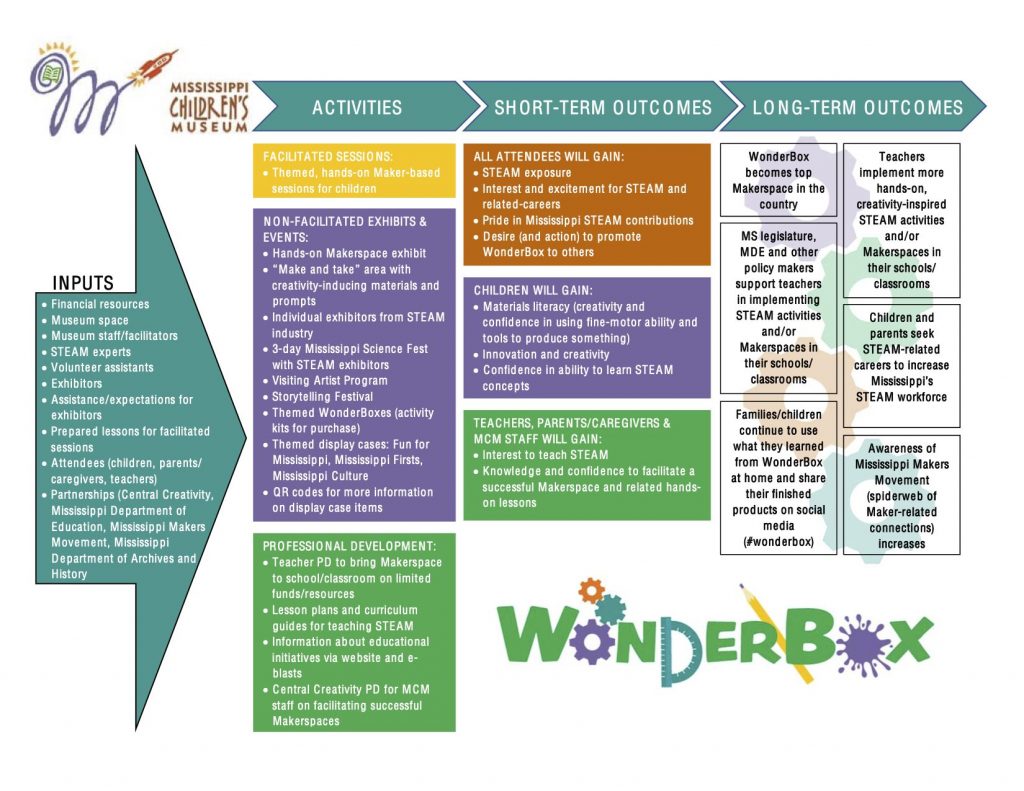
Logic Models vs Theories of Change
By Shannon Sharp
Logic models and theories of change help programs organize and illustrate their activities and goals. Funders often require these illustrations to help them understand exactly what a proposed initiative intends to do and what change is expected to come of it. For program evaluators, understanding a program’s intended progression from intervention (activities) to outcomes (goals) drives evaluation-question and evaluation-plan development.
Isn’t a logic model and theory of change the same thing??
Nope! Though the terms “logic model” and “theory of change” are often used interchangeably, there are some key differences that affect how they are developed and used.
What vs Why
The main distinction between a logic model and theory of change is that a logic model describes a logical sequence showing what the intervention’s intended outcomes are—If we provide X, the result will be Y—while a theory of change includes causal mechanisms to show why each intervention component is expected to result in the intended outcomes—If we provide X, A will support (or hinder) a result of Y. Though logic models ideally include a section for contextual factors and assumptions, these are not detailed within each part of the model and are often left out altogether. A theory of change includes these factors, where appropriate, throughout the model. As such, a logic model is descriptive while a theory of change is explanatory.
A step in the right direction
Logic models and theories of change also differ in how they progress from one step to the next. Logic models are linear, progressing step by step—typically from inputs to activities to outcomes—and an effect never precedes a cause. In a theory of change, however, components are not always linear and effects can, and often do, later influence causes (for example, as shown below, exercise is expected to result in looking better, but positive feedback from others about looking better then encourages the individual to continue exercising).
In the drivers’ seat
As noted earlier, a logic model is based on a logical sequence of steps. On the other hand, as its name implies, a theory of change is theory-driven. The mechanisms responsible for how its various components interact with each other can develop from real-world examples, academic literature or even a program leaders’ hypotheses. Because of this difference, a logic model is usually constructed after the program is developed, as a way of describing the program and its intended outcomes, while a theory of change is most useful when considered before program development as a way to determine the best intervention(s) for the desired outcome(s). This is not always the case in practice, but nonetheless reflects their individual strengths.
Which way to turn?
Practically, as program evaluators we want to use the type of program illustration that is most useful for its given purpose. Easy for me to say… but what does that mean? In a nutshell, a logic model is great for summarizing the key components of a program in a way that others can understand at a glance. Clients, stakeholders and funders are likely to appreciate the way even complex programs can be made easy to understand. Bonus points if the logic model includes conceptual factors and assumptions to help frame decision-making and conclusions. On the other hand, for a more rigorous examination of when to evaluate certain outcomes and determine why a program might or might not work (or in the end, why it did or did not work), a theory of change is your best bet.
Take a look
Here are two examples that highlight the components of a logic model versus theory of change. The Center for Research Evaluation (CERE) developed the logic model for our evaluation of the Mississippi Children’s Museum’s WonderBox (makerspace) exhibit. It includes all inputs, activities and intended short- and long-term outcomes for the program. The theory of change is an adaptation of one illustrated in Michael Quinn Patton’s book, Utilization-Focused Evaluation, 4th Edition. Though a bit simplistic (most theories of change will have more components), notice how the theory of change includes the causal mechanism positive feedback from others, which mediates how the effects (look better and feel better) impacts their causes (diet and exercise).
Adapted from: Patton, M. Q. (2008). Utilization-Focused Evaluation, 4th Edition. Sage.
We found these resources particularly helpful:
- Patton, M. Q. (2008). Utilization-Focused Evaluation, 4th Sage.
- https://analyticsinaction.co/theory-of-change-vs-logic-model
- https://www.theoryofchange.org/wp-content/uploads/toco_library/pdf/TOCs_and_Logic_Models_forAEA.pdf





